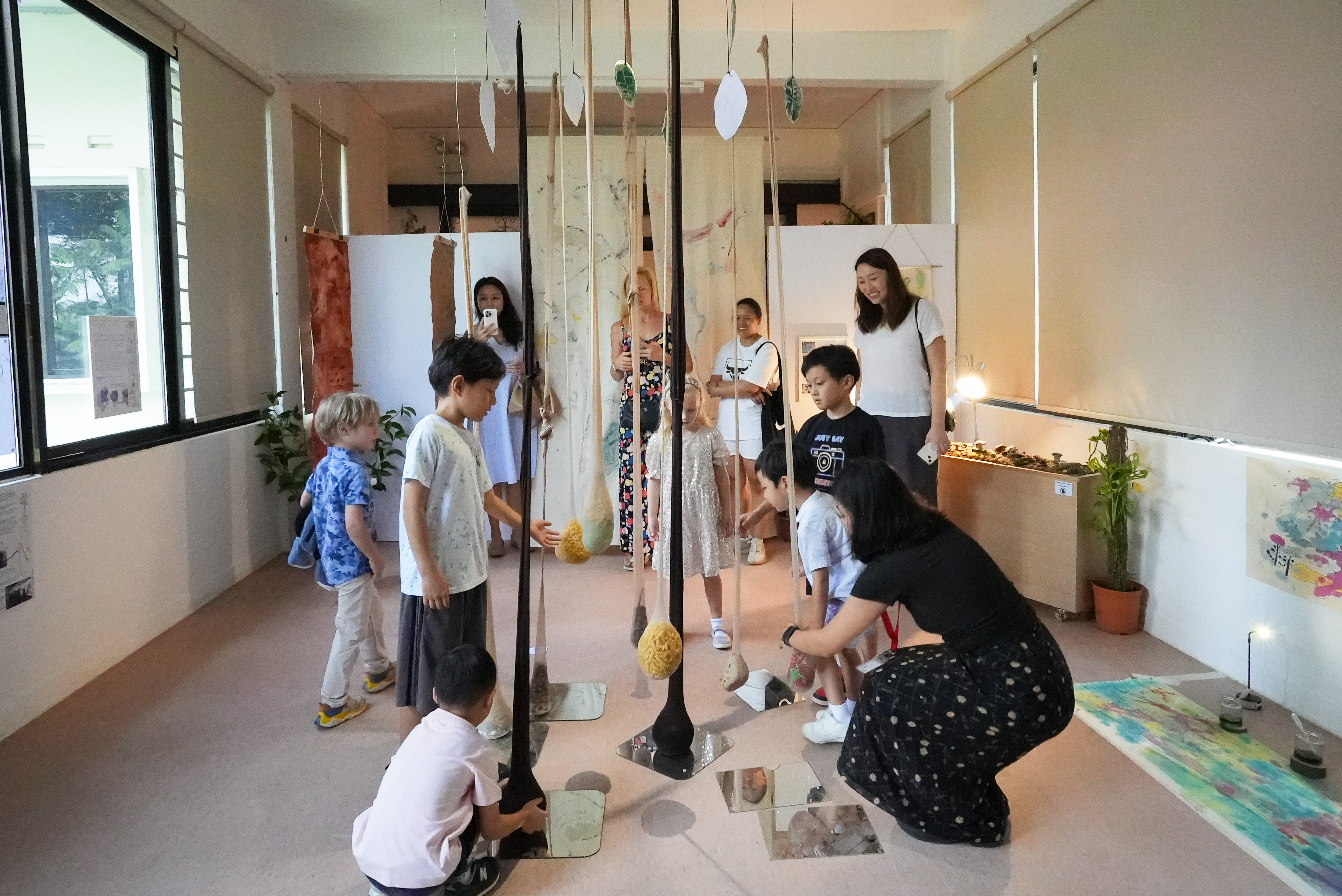-1.png)
EtonHouse Singapore
At EtonHouse International Pre-School Claymore, learning begins with a spark of curiosity and unfolds into a rich tapestry of exploration, creativity, and connection. Guided by the Reggio Emilia approach, we believe that every child is capable, competent, and full of potential.
Hosted at the end of the academic year, our 100 Languages Exhibition becomes a canvas for this philosophy, where children’s voices, ideas, and identities come alive in the most compelling ways..png?width=512&height=383&name=unnamed%20(6).png)
A Whole-School Inquiry, A Shared Vision
Each year, our entire school community comes together to pursue a shared inquiry. This year’s theme, “The Materials and Tools of Life,” encouraged children to explore and reflect on the many ways materials, both tangible and abstract, shape our lives and influence how we make meaning of the world.
From our youngest pre-nursery learners to our confident K2 explorers, children were invited to engage deeply, question boldly, and express themselves through many languages, spoken words, as well as light, sound, movement, clay, wire, and more.
This wasn’t just a theme. It was a way of thinking.
“It’s a way of seeing the world through the lens of possibility. Everything becomes a tool for storytelling, a material for meaning-making.” Aletia, Curriculum Coordinator
.png?width=512&height=339&name=unnamed%20(7).png)
Passionate and Highly Qualified Educators as Co-Constructors
At the heart of this extraordinary learning experience are our educators, passionate, reflective, and deeply committed to their craft. EtonHouse is proud to be the only school in Singapore that works directly with the Reggio Children International Network, giving our educators access to high-quality professional learning grounded in authentic Reggio Emilia approach.
As one of the few education groups in Singapore with a dedicated research and training arm, professional growth is embedded into our culture. Through ongoing professional development, our educators are empowered to refine their curriculum, remain inspired, and design experiences that are intentional, thoughtful, and responsive to each child’s unique learning journey.
It is through their expertise and care that the 100 Languages Exhibition comes to life, transforming children’s theories into immersive spaces, and translating questions into deep, joyful inquiries.
.png?width=512&height=374&name=unnamed%20(8).png)
Clay That Holds Memory
In our Pre-Nursery classes, children pressed found objects—bottle caps, corks, sticks—into soft clay, watching as the impressions told stories of touch, shape, and memory.
“Clay holds memory. It invites children to express what they see and feel. When combined with loose parts, materials become more than objects—they become storytellers.” Zoe, Educator.
.png?width=512&height=349&name=unnamed%20(9).png)
Spaces that Speak, Materials that Inspire
At Claymore, learning doesn’t just happen inside a classroom. It happens everywhere. Our Atelier and ReAldo Lab brim with open-ended materials—screws, wires, feathers, natural fibres—that encourage children to investigate, tinker, and imagine.
“What else could a screw be, besides a screw?” asked a child.
The question lingers in the air—inviting multiple perspectives and endless interpretations. This is the essence of the Reggio Emilia approach: children are protagonists in their own learning, co-constructing knowledge with their peers, educators, and the environment.
.png?width=512&height=374&name=unnamed%20(10).png)
Light, Movement, and the Language of Wonder
One of the most breathtaking experiences in this year’s exhibition was the light installation. Children engaged with shadows, colours, and projection to discover how light transforms space and emotion.
“At Claymore, we see space as an active partner in learning. The environment invites children to take risks, to imagine, and to express ideas that words alone may not capture.” Ainhoa, Educator.
.png?width=512&height=380&name=unnamed%20(11).png)
The Garden as Teacher
Outdoors, the inquiry extended into the garden—our living lab. K2 children studied the hidden networks of nature: fungi, trees, and the underground connections that nourish life.
Using ink, string, and motion, they represented the flow of nutrients and messages beneath the soil. The result? A collaborative mural that reflected both scientific understanding and poetic curiosity.
“We are similar to trees, branches are like our hands, leaves are like our hair and our body is the trunk and our veins are like their roots” Sahana, K2 learner
It was a moment that reminded us: children don’t just learn about the world. They form relationships with it.
When Learning Comes to Life
The 100 Languages Exhibition culminated in a showcase where parents walked through transformed classrooms, immersed in light, texture, sound, and story.
.png?width=512&height=340&name=unnamed%20(12).png)
.png?width=531&height=340&name=unnamed%20(13).png)
.png?width=512&height=344&name=unnamed%20(14).png)
“My favourite part of the 100 Languages Exhibition is that when I walked in and saw the regular classrooms transformed into such beautiful and multi-sensory spaces—lights, shadows, clay, vibrations and paint—you get to see it all. As a parent, it really shows how EtonHouse is so creative. If they can do this for one exhibition, I can only imagine their day-to-day life is so much fun and so nurturing for our children.” Charmaine Yee, Parent
Innovation Begins With the Child
At EtonHouse Claymore, we believe innovation in early childhood education begins with listening to the ideas, questions, and theories of children. Through inquiry, relationships, and meaningful experiences, we nurture confident, capable learners who think critically and care deeply.
Our 100 Languages Exhibition is more than a showcase. It’s a window into the heart of our pedagogy and a powerful tribute to the educators who bring it to life every single day.
Curious to see how the Reggio Emilia approach comes alive at an international preschool in the heart of Singapore?


